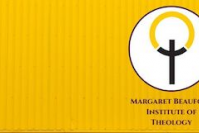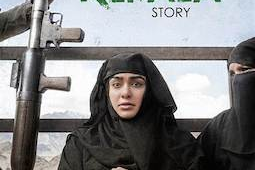The Death of Life: The Horror of Extinction
Political, economic and religious leaders need to take decisive action if some 11,000 species are not to become extinct in the next 50-100 years according to Dr Seán McDonagh, a missionary priest and expert on the environment.
Dr McDonagh claims that the battle to stave off the 'extinction of species which could sterilise the planet', is as important as the fight against slavery and efforts to protect workers' rights in previous generations. He makes these points in his new book, The Death of Life: The Horror of Extinction, which has just been published.
The extinction of one species has a 'knock-on effect on at least 16 other species,' he says. Yet, political and economic decision makers 'do not appreciate the extent to which the insatiable demands of our global economy are thoroughly tearing apart the web of life, with disastrous consequences for future generations'.
The Church too has had an ambivalent attitude towards earth and creation, and Dr McDonagh is critical of church leaders who stayed silent on the massive problems that faced the earth in the twentieth century. Indeed, it was 1990 before the first papal document devoted exclusively to environment and development issues was published.
Human activity causes extinction in three ways according to Dr McDonagh: habitat destruction, the introduction of alien species into an ecosystem, and human-created pollution. He offers examples of each of these, citing the destruction of tropical forests, over-fishing and modern fishing techniques, and changing landscapes as being typical of habitat destruction. For example in Ireland, the destruction of wetlands is having a negative impact on bird species. The introduction of the zebra mussel to this country in the 1990s causes annual problems, most notably on the Shannon. Human-created pollution includes not just byproducts of industrial activity and oil spills, but also the much-discussed global warming. The atmospheric concentration of carbon dioxide, methane, chloroflourocarbons (CFCs) and other 'greenhouse' gases is expected to increase by 30% by 2050.
Ultimately, 'factors generated by human activity' are mainly responsible for the decline of species of animal, bird, fish, insect and plant life. Dr McDonagh quotes one account which estimated that human activity causes the extinction of between 70 and 150 species each day. As a case in point, he focuses on the decline in the global salmon population, made all the more topical by recent news from Kilkenny, where a new weir on the River Nore was preventing the fish from spawning.
A significant part of The Death of Life looks at the role of the Church in relation to the environment. Dr McDonagh traces the influence of Greek culture with its distinction between matter and spirit, Christianity's own dualism between flesh and spirit, the influence of Augustine, Jansenism, and even prayers such as the Hail Holy Queen, which is recited at the end of the rosary, which sees earth as a 'valley of tears'. The 'most important role' that the churches can play he writes, is to 'articulate a competent theology of creation'. This can no longer be based solely on religious texts, but 'needs to be grounded in scientific knowledge'.
The churches too must develop 'an appropriate ethical framework for promoting the integrity of creation and justice'. Such an ethic would demand a legal framework, he says. More adequate accounting systems are also needed to show the finite nature of the world. One such model, the 'human ecological footprint', defines the land area required to provide the resources and absorb the emissions for the global society. According to one source, this measure was exceeded by 20% in 1990.
For the sake of future generations, we need to 'lower population, alter consumption levels and promote more resource-efficient technologies'. This has ramifications, for instance, for the Catholic position on birth control, and for the 'modern, growth-oriented, industrial model of development,' which Dr McDonagh states has been 'the principal cause of ecological devastation in our world today'.
Seán McDonagh is a Columban missionary priest. He is the author of several books including Passion for the Earth (1995), Greening the Christian Millennium (1999) and Why are We Deaf to the Cry of the Earth? (2001). His involvement in environmental issues stemmed from his years on the island of Mindanao in the Philippines in the 1970s and 1980s. Originally from north Tipperary, he now resides at Dalgan Park, Navan, Co Meath.
The Death of Life: The Horror of Extinction by Seán McDonagh is published by The Columba Press and is priced at Euro9.99/£6.99. It is available in bookshops or over the internet from www.columba.ie.LONDON - 14 January 2005 - 760 words


















